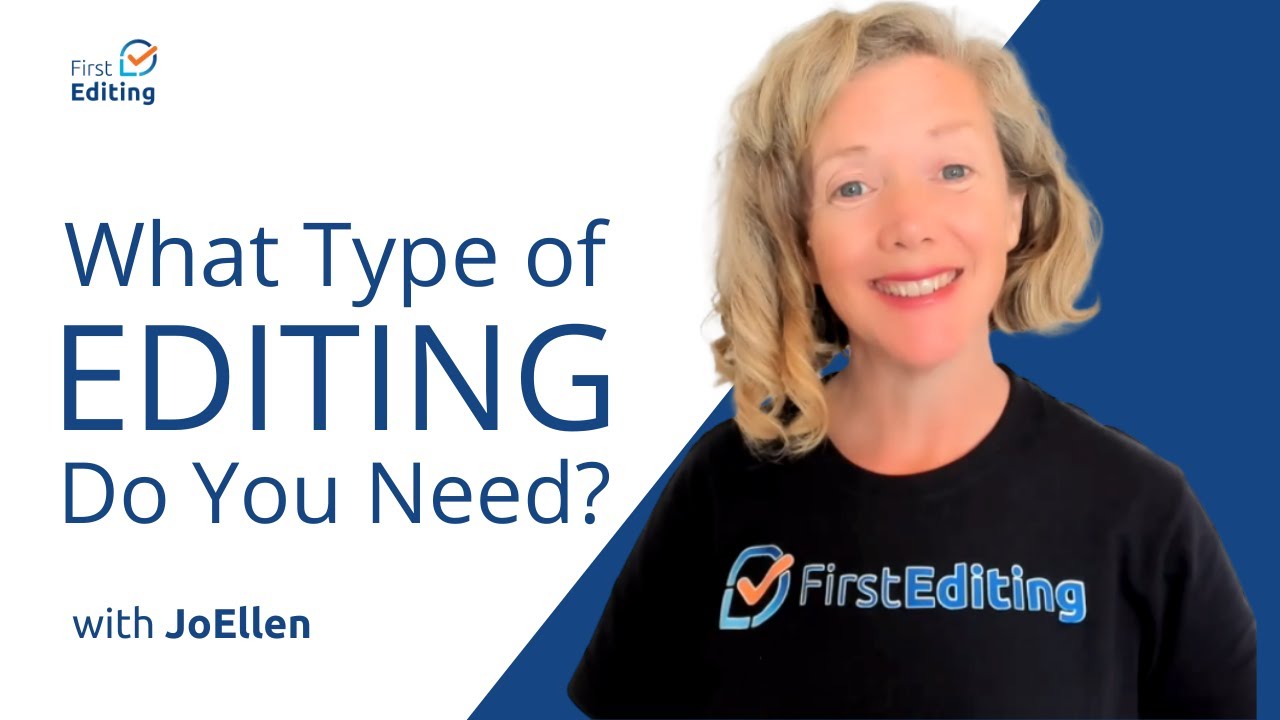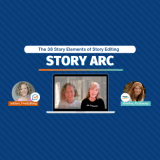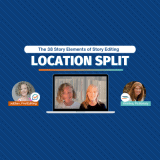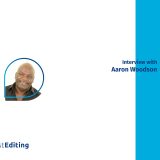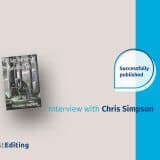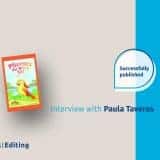
In this episode, Hayley Milliman, the content lead for ProWritingAid, joins JoEllen Nordstrom and they are going to talk about readability.
ProWritingAid is basically a grammar guru and style editor and copy editor and writing mentor all inside this one fantastic platform. Every single one of our editors uses ProWritingAid as a professional editing tool. We love combining and partnering with ProWritingAid and helping people do better self-editing so their writing improves.
Learn what manuscript readability is and how it can help improve your writing right now.
The Goal of Readability
The goal of readability is not to do what I was doing, just throwing a lot of complicated words in to try to hit a score, but the goal is more to write with your audience in mind. So when I’m writing grading assessments for fifth- and sixth-graders, I have to be writing with that audience in mind and what they are understanding. If I didn’t do that, it could negatively affect many, many things. It would affect their ability to complete the assessment; it would affect their ability to graduate, among other things, so it is really important to make the work readable at that point. That’s why I start with readability.
Larger Scale
Larger scale readability is basically that are you able to you know that your manuscript, or whatever you are writing, is able to be read and understood and engaged with by your audience. Otherwise, they going to have to muddle through it and see a bunch of different, complicated words and just really not engage with and enjoy it, probably like my college professors did when they were reading those papers that I just chucked a bunch of fancy words in to sound smart.
Readability Score
Some people are familiar with readability and some people aren’t, and we have a lot of people come to our company and they are barely familiar with Track Changes. So we come back to their writing’s readability score and kind of catch them up with that, because it is an important thing and people are just not aware of how great a tool ProWritingAid puts out there.
So basically, a readability score is just a numerical representation of how easy your work is to read. There isn’t one specific readability score; rather, there are a number of different formulas out there that all give their own number, but basically, they all say the same thing. They basically all predict who is able to read your text based on a number of different calculations, such as a Grade 3 level being understandable by a ten-year-old.
Some of the more well-known ones out there are Flesch-Kincaid, which Microsoft Word utilizes. This is just a different way to calculate what’s in your writing and make a prediction about who’s able to read it. And who’s able to read it doesn’t mean necessarily who’s able to enjoy it, but that a person would be able to read and understand your writing.
Moving back to when I was writing the elementary school assessments, I was always aiming for a readability score that was at or below where my student was, so writing a fifth-grade science assessment, I wanted my readability to be at whatever the kind of equivalent fifth-grade level was, or below it. And again, each of these formulas gives a slightly different number, but they all mean the same thing; it’s just on their scale, just what age level of readers would able to confidently understand the ideas in the text. As I said, there are multiple different kinds of formulas out there but they all just really are predictors of who can read your writing. They look at a thing like a sentence link, like word choice, use of jargon, all that kind of stuff.
What Kind of Score Should we aim for in General?
When I was writing high school papers I was aiming for the top readability score—that was terrible, don’t do that. You should never aim for the top readability score. This is actually something that really, really surprises people because I think a lot of us think oh, I’m writing for adults, you know, I should aim for college-level or really high readability, but that’s actually the worst thing that you can possibly do. You never want to write above the level of your audience.
Do you know that there’s data out there about this and you—assuming you might know this, I will ask our audience this time. People sometimes are usually off what grade level they should be writing for. You ask what grade level do you think most mass-market fiction is written for? Well I’m going to go back to fifth grade. People want to aim higher in science fiction, especially as it can be a combination of so much fantastic imagination and science. it’s that crazy combination of creativity and imagination, but it is also based on some really cool thing that not everybody is digging into.
I have a fifth-grader right now and it’s really fun when I’m helping her with her writing. I’m really impressed with the level of writing. They have their thesis statement and support statement and they have their body and their closing and all that and I’m like good, this is great! What I realized is I was kind of surprised how I forgot after all these years how young they start to learn that. So it is not a low level of reading at all; fifth-grade is quite high. I mean, didn’t they have the TV show about that?
It is an amazing amount of things that I’m learning again when I’m helping her study for a test. But I think the writing that’s the fifth-grade level I always say is at least good. Of course, I quite often see the mistake with science fiction that they want to be at, you know, at least a bachelor of science to a master’s degree readability level and yup, okay, maybe. That’s cool, but there are a lot of kids out there that can read but can’t follow that level of writing. So it goes back to writing for your audience.
It’s a really new thing, it’s just a crazy combination; it sounds like most mass-market fiction and most newspapers or CNN, that type of thing, the writers of those are aiming for a readability score of from around twelve years old, like they want the vocabulary they use and sentence structure to be understood by fifth-, sixth-, seventh-graders the very top, and that’s just like you said; a lot of writers make that mistake where they are going way higher than that for their readability score, thinking, Oh, you know, I’m writing for adults so I should write at bachelor of science level or I should write at college level. No. No, you should actually aim for the word choice and sentence structure to be at about twelve years old, so that a twelve-year-old could understand it. And that is one of the key pieces of good writing.
If you think about it, you know what the level is I can read so maybe my highest read is at, I don’t know, a bachelor, master level, whatever. But I don’t want to do that every day, right? I want to read a book for fun. I want to get lost in the world, get lost in the characters, get lost in the ideas. I don’t want to sit there, having my dictionary next to me, having to flip it open or go back to the beginning of the sentence and be like, what is this about, you know? I don’t want to have a highlighter to read books. Again, many fiction writers make this mistake, where they think, Oh, I need to aim for higher readability. Rather, you should actually aim for something lower and again, for most of us, that’s going to be right around twelve years old. That way the ideas, the characters you’re writing are fun and they are one of the things talked about in book clubs and on social media.
Readability is Flexible
Readability is flexible, so if you’re writing for a science-fiction audience, they might have a different kind of understanding of the background. Then again, a romance audience expects different things. What makes something readable for one audience is different from another audience. There is flexibility in there, and what you are aiming for doesn’t really need to be as specific as, Oh, I’m using the simple words the whole time. It just means this is readable for a twelve-year-old, and then where you specialize at different points will be different depending on who you are writing for.
That why I love bringing in academic work, because you may be dealing with a very high-level topic and the complication you think you must convey, especially as we have a lot of academics whose first language is not necessarily English, and it’s hardcore science you’re dealing with. It’s ideal to have the sentence structure and the presentation readability level at the fifth- to seventh-grade level.
Let the research speak for itself because it will do the work for you. It’s not important for you to have the grammar and the vocabulary to be so complicated—English is complicated enough. We don’t need to magnify for anyone.
Also, when you get to different languages—I’m talking about British versus American—there’s a huge difference in the length of that sentence presented. Okay, I’m American, but I do cut down a little bit and simplify so that people aren’t lost by the end of the sentence. In another show we talk about how much you’re saying. Clarity and readability go together, so when we’re going for this low readability score, we’re not necessarily dumbing down our work.
No, no, not at all. And people get so nervous about this but readability has nothing to do with ideas. Readability has to do with word choices and sentence structure. You can have complex, adult ideas that you know you’re explaining with clear words and you should, actually. The more complex your idea, the more simple your language should be. That way, your readers can engage with those ideas instead of engaging with words.
Moving it back quickly to the assessment, readability doesn’t mean every single word is for a ten-year-old, right? Or every single word is simple. It means overall, your average is aiming for a twelve-year-old readability level, not every single word. kinda want to talk about kinda poker chip you almost like spend chips certain places and it depends on what your writing depends and how you spend those chips when I was writing this assessment.
I’d have to use some complicated, domain-specific vocabulary, so if I was writing a science assessment, I might have to use the word thermometer, something that complicated, a little above what that readability would be. Biodiversity; I don’t know, something like that. It’s a more complicated term, so I would kinda spend a chip on biodiversity but the rest of the sentence would be simple. So depending on what you’re writing, think about where you want to spend those chips. So if you’re a science fiction writer, you’re probably going to spend those chips on describing space travel and describing how planets are, you know, or whatever, like the species and stuff like that. That’s totally okay. It doesn’t mean that you have to rip all that out of your writing or as we said, dumb down your ideas. What I mean is think carefully about your audience and what you want them to understand, engage with, and enjoy.




